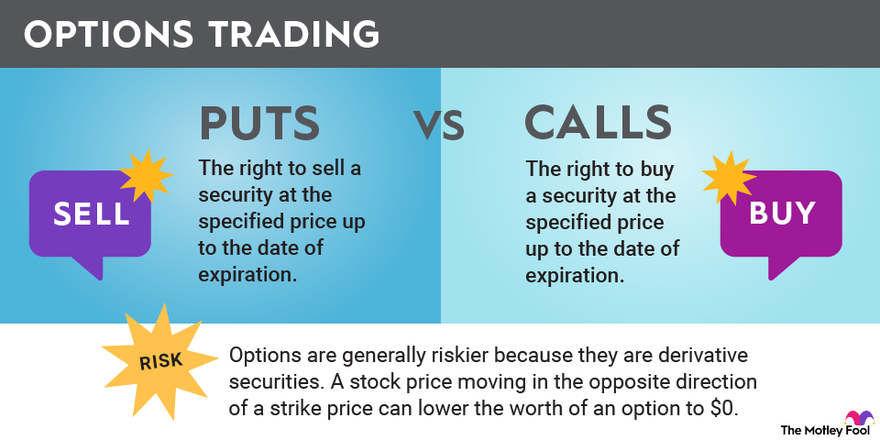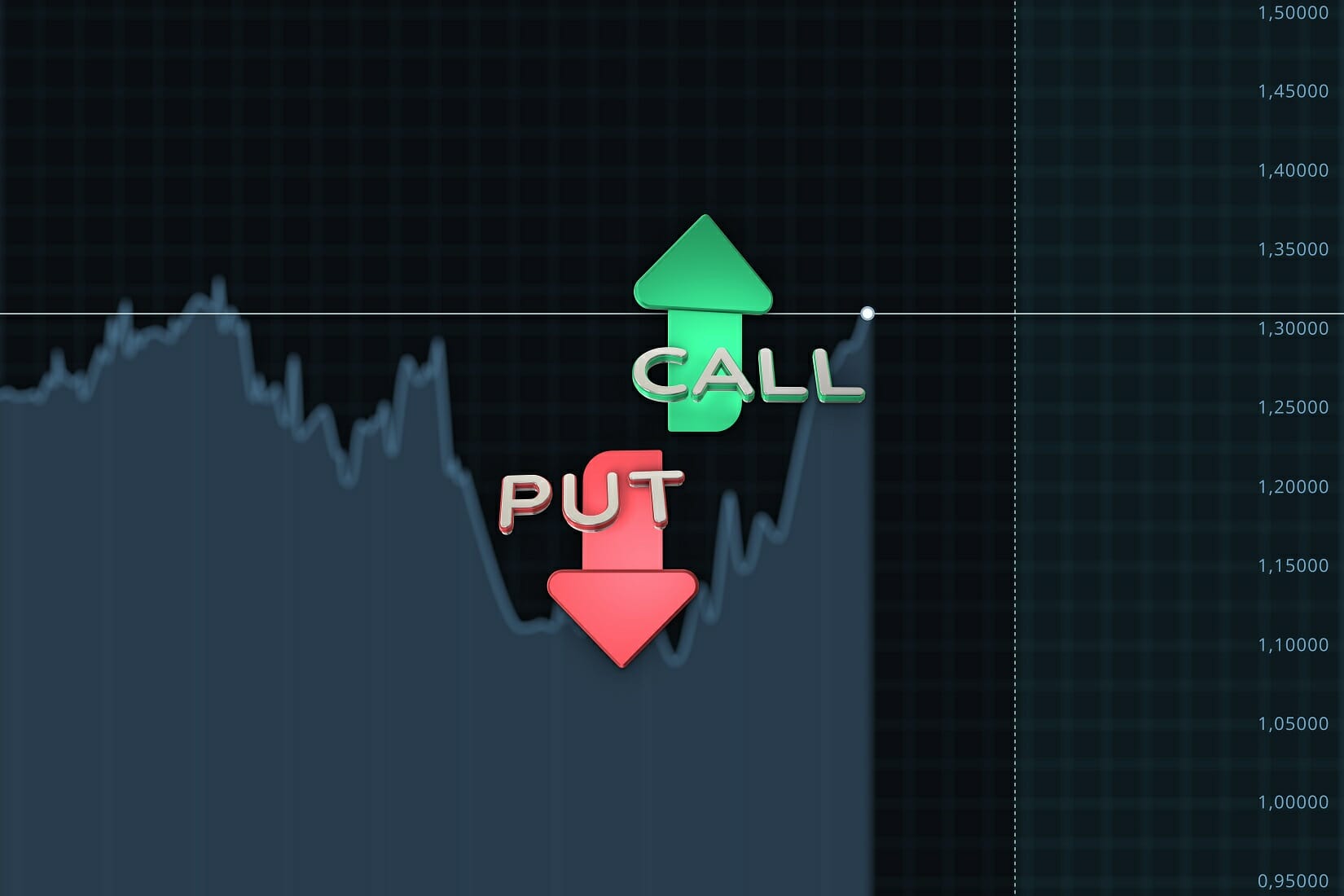Introduction
Options trading is a sophisticated investment strategy that allows individuals to speculate on the future price movements of assets without owning them outright. Unlike stocks or bonds, options contracts provide traders with the rights and obligations to buy or sell a specific underlying asset at a predetermined price and time. This flexibility offers investors the potential for significant profits, but also carries substantial risk.
In this comprehensive guide, we will delve into the world of options trading, exploring its foundational concepts, market dynamics, and the strategies used by successful traders. Whether you’re a seasoned investor or a curious novice, this article aims to provide you with the necessary knowledge and insights to make informed decisions about options trading.

Image: www.fool.com
Understanding the Basics: Calls, Puts, and Premiums
Options contracts come in two main varieties: calls and puts. A “call” option gives the holder the right to buy the underlying asset at the strike price on or before the expiration date. Conversely, a “put” option grants the holder the right to sell the underlying asset at the strike price. The strike price is the predetermined price at which the underlying asset can be bought or sold.
The premium is the price paid by the buyer of an option contract to acquire the rights it confers. The premium is determined by factors such as the underlying asset’s current price, the strike price, the time until expiration, and the market’s assessment of the asset’s price volatility.
Types of Options Trading Strategies
Options traders employ a wide range of strategies to capitalize on market movements and manage risk. Some common strategies include:
- Covered Call: Selling a call option against an underlying asset that you already own.
- Cash-Covered Put: Selling a put option while holding cash equal to the strike price.
- Protective Put: Buying a put option to protect a long position in the underlying asset.
- Iron Condor: Simultaneously selling an out-of-the-money call and put option while buying two at-the-money call and put options.
Getting Started with Options Trading
Before venturing into options trading, it’s crucial to understand the risks involved and assess your tolerance for volatility. Options can amplify both potential gains and losses, making it essential to approach this strategy with a clear risk management framework.
To get started, you will need to open an options trading account with a brokerage firm that offers these services. Once your account is established, you can research and select the options contracts that align with your investment goals and risk profile. It’s always advisable to proceed cautiously, especially when trading options for the first time.

Image: michealschuler.blogspot.com
The Risk Involved in Options Trading
While options provide significant earning potential, it’s important to be aware of the inherent risks. The premium paid for an option contract is essentially the investment at risk. If the underlying asset’s price moves unfavorably, the option’s value can decline or even expire worthless, resulting in a loss of the entire premium paid.
Moreover, options trading involves the potential for unlimited losses. This is because the potential for price fluctuations in the underlying asset is not limited, particularly for long call and put options. It’s essential to have a comprehensive understanding of these risks and implement robust risk management strategies to mitigate potential losses.
Benefits and Usefulness of Options Trading
Despite the risks involved, options trading offers several potential benefits and advantages:
- Increased Leverage: Options offer leveraged exposure to the underlying asset, allowing investors to potentially amplify their profits.
- Downside Protection: Put options can provide downside protection for long positions in stocks or other assets.
- Income Generation: Selling options with high premiums can generate additional income while reducing overall portfolio risk.
- Volatility Management: Options can be used to hedge against volatility or speculate on price movements.
- Tax Advantages: In certain circumstances, options trading can offer tax advantages compared to traditional stock or bond investments.
Expert Insights: Understanding the Market
John Smith, a renowned options trading expert, emphasizes the importance of understanding market dynamics and price movements. He advises traders to stay informed about economic data, company financials, and industry trends that may impact the underlying asset’s price.
“The best options traders are those who can anticipate market movements accurately,” says Smith. “By studying historical patterns, identifying technical indicators, and continuously evaluating market conditions, you can gain an edge in predicting price fluctuations.”
Whats Trading Options
Conclusion
Options trading is a multifaceted investment strategy that provides investors with the potential for significant returns but also carries inherent risks. By understanding the foundational concepts, market dynamics, and trading strategies, individuals can leverage options trading to enhance their investment portfolios and meet their financial goals. However, it’s crucial to approach options trading with a clear understanding of the risks involved and to proceed cautiously, especially when starting out. With proper research, risk management, and a grasp of market trends, options trading can be a powerful tool in the arsenal of sophisticated investors seeking to navigate the complexities of the financial markets.






